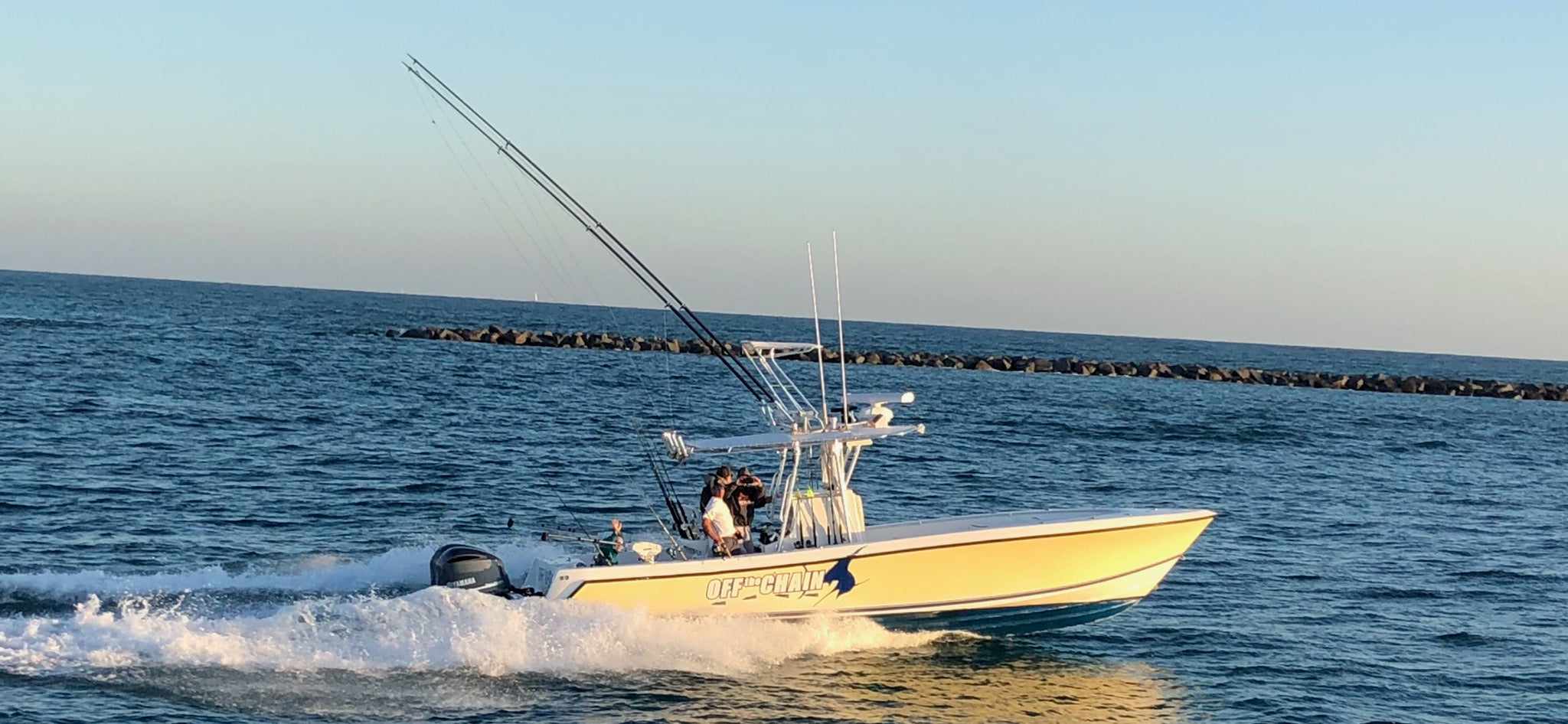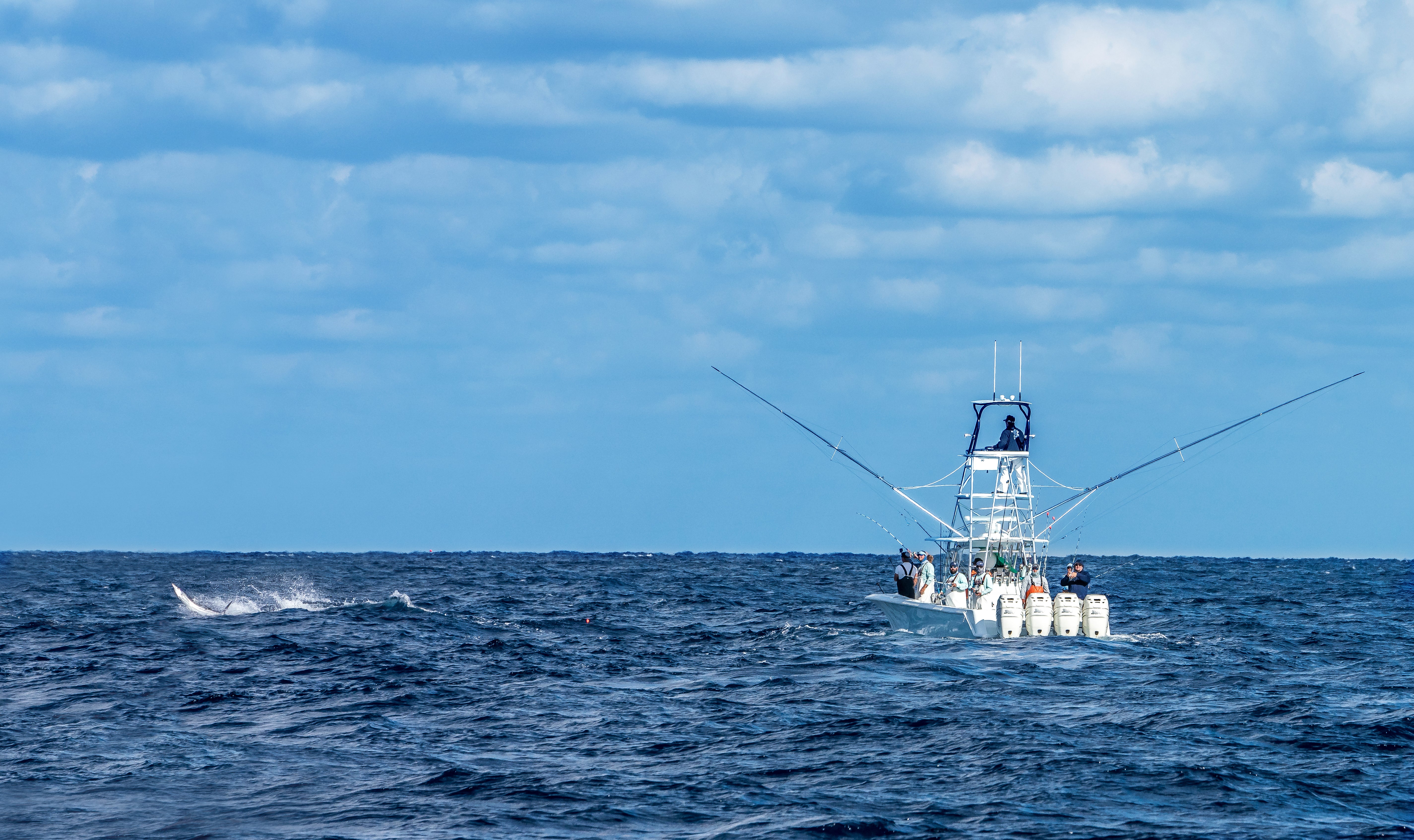Outriggers are a crucial component of any serious fishing boat, and a critical part of an outrigger system is the halyard lines. When it comes to selecting halyard lines for your outrigger system, there are two main types of material to choose from: monofilament and braided nylon. In this blog post, we will explore the differences between these two materials and their respective pros and cons to help you make an informed decision for your outrigger system. We'll also discuss how Rupp Marine, a leading manufacturer of outrigger systems, offers both materials to give you the option that best suits your needs.
Monofilament halyard lines are made from a single strand of nylon. This material is known for its strength and durability, making it a popular choice for fishing lines. Rupp recommends using 400lb monofilament, it has a high tensile strength, which makes them ideal for use in their outrigger systems. They are also more resistant to UV rays and saltwater, which makes them suitable for use in harsh marine environments.

The low stretch of monofilament halyard lines means they maintain their shape and position even under heavy loads. This is essential for outrigger halyard lines as they need to stay taut and secure. However, monofilament halyard lines have a tendency to kink and twist, which can make them challenging to handle when hoisting or lowering your outrigger clips. Additionally, they can be slightly more expensive than braided nylon, which may be a consideration for those on a budget.
Braided nylon halyard lines are made up of multiple strands of nylon that are woven together in a braided pattern. This creates a strong, flexible line that is easier to handle than monofilament. Braided nylon halyard lines are a popular choice for smaller outrigger systems since the halyard lengths are substantially shorter than large side mounted Rupprigger systems.

Braided nylon halyard lines are more flexible than monofilament, which means they are less likely to kink or twist when hoisting or lowering your outrigger release clips, making it a good choice for those who are new to outrigger systems. Additionally, they are typically less expensive and easier to rig than monofilament, which requires some basic crimping skills. However, braided nylon halyard lines have a higher stretch than monofilament, which can make it more challenging to maintain the proper tension on your outrigger halyards, requiring frequent adjustment. The excess stretch can lead to sagging or dipping lines, which can also affect your release clip performance, if not kept properly adjusted. Also, braided nylon may be less durable than monofilament, especially if exposed to the elements for long periods.
Rupp Marine offers both monofilament and braided nylon halyard lines for your outrigger system, and sells the material in bundles or packaged into one of their many outrigger rigging kits. This gives you the option to choose the material that best suits your individual requirements and preferences. Regardless of which material you choose, proper maintenance and care will help prolong the life of your halyard lines and ensure optimal performance from your outrigger system. Always inspect your halyard lines for signs of wear and replace them if necessary, they are a "wear item" and will need to be replaced as needed.
See a collection of Rupp rigging kits by visiting their online store here.


In conclusion, whether you choose monofilament or braided nylon halyard lines for your outrigger system, Rupp Marine has you covered. With their extensive expertise in the field and commitment to quality. By carefully considering the pros and cons of each material, you can make an informed decision for your outrigger system and enjoy successful fishing trips on the water.



